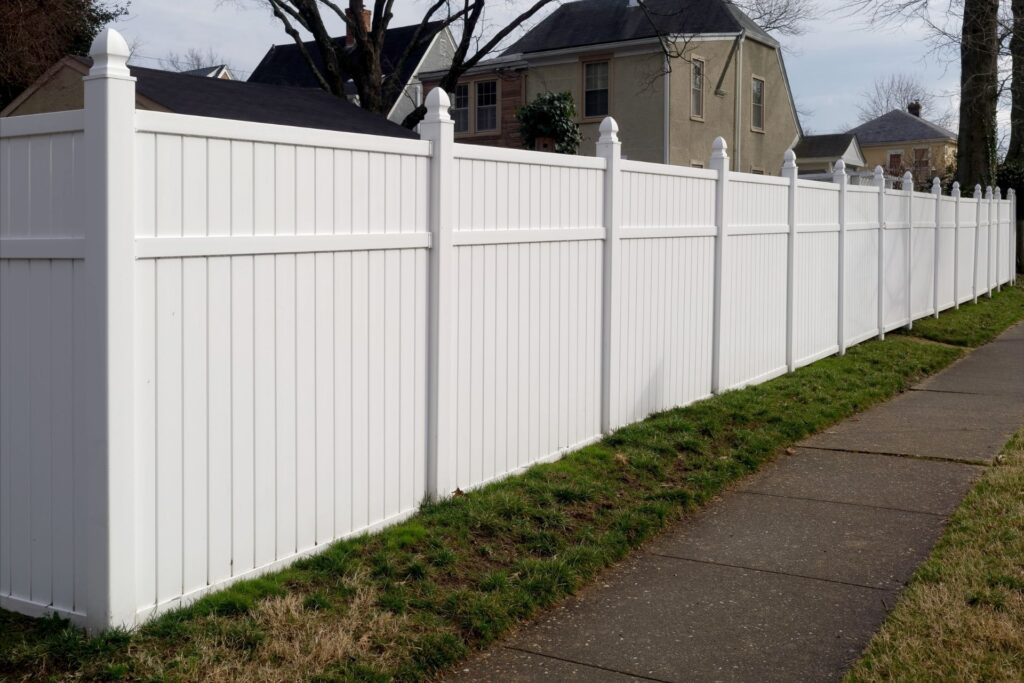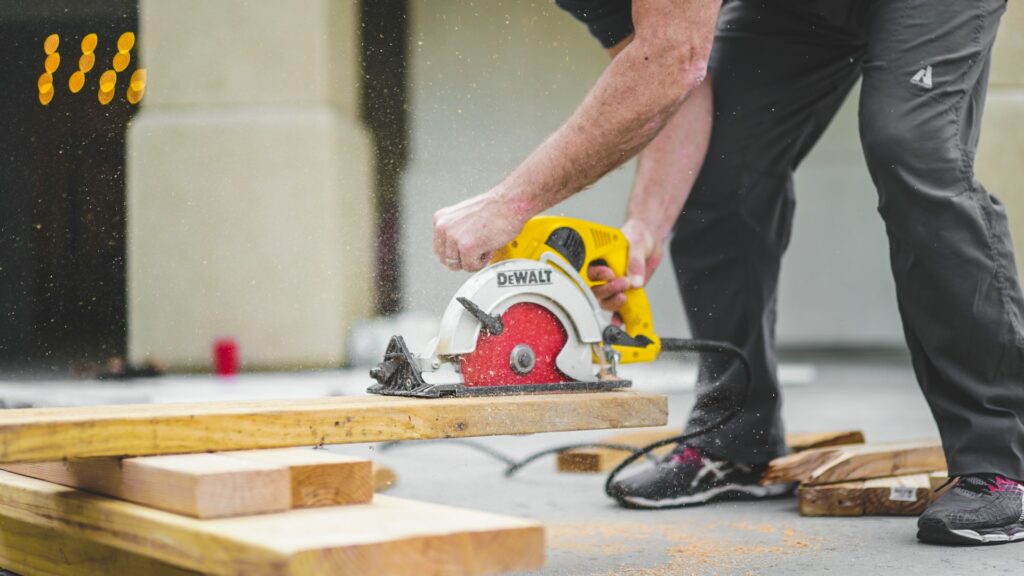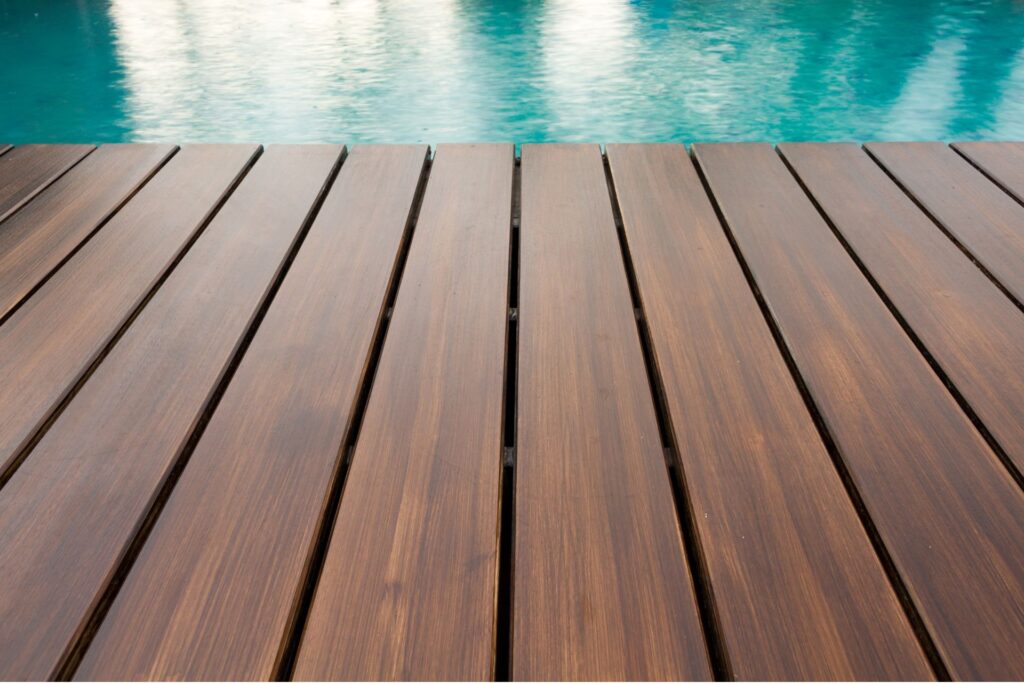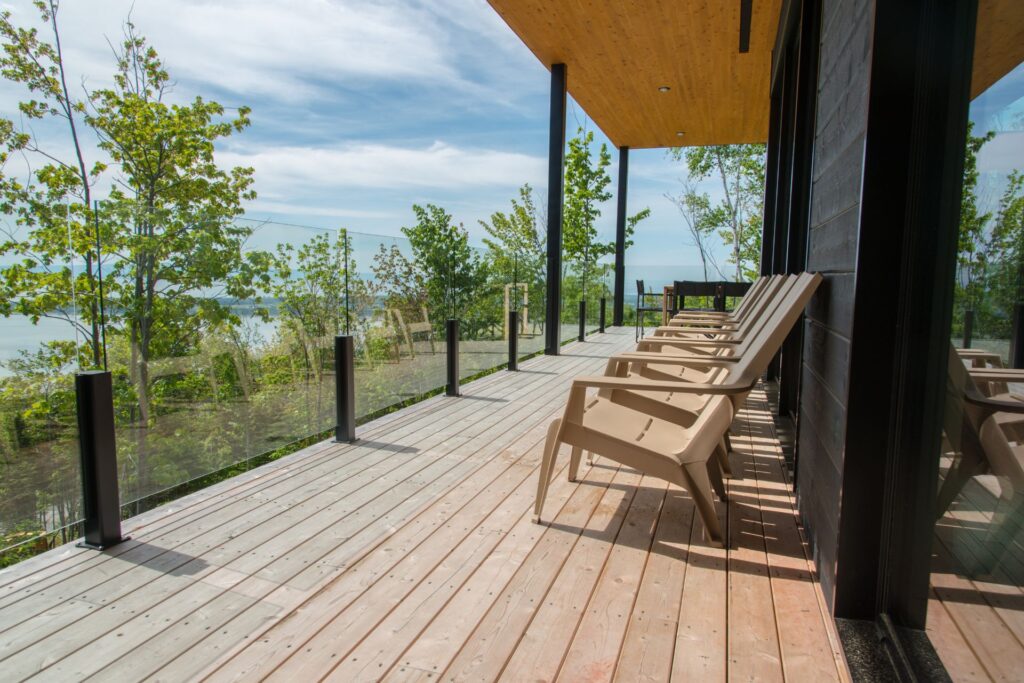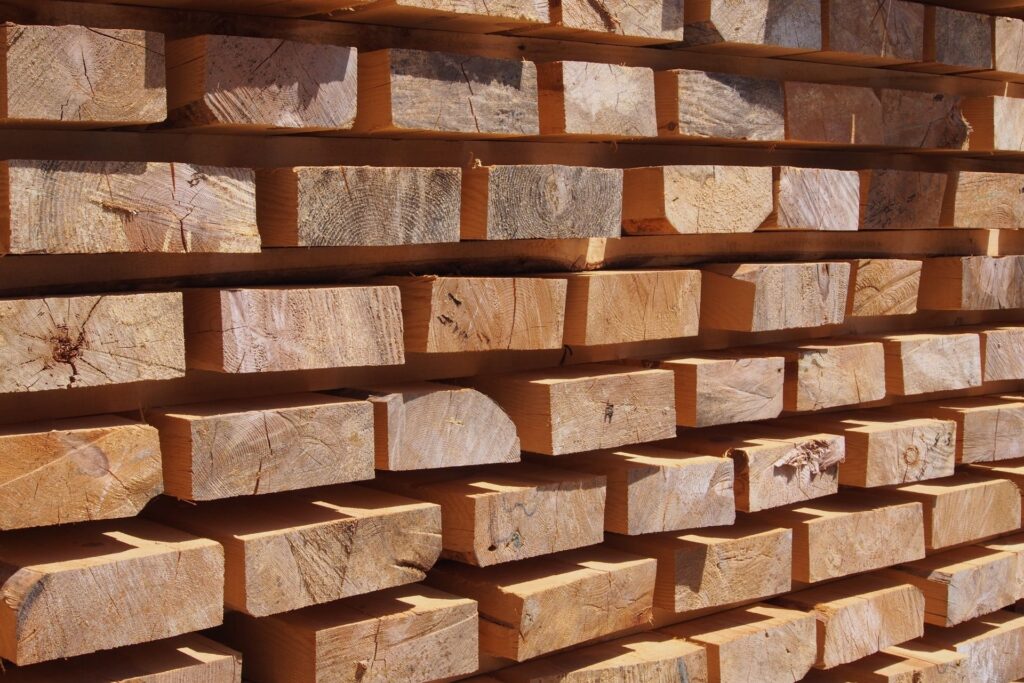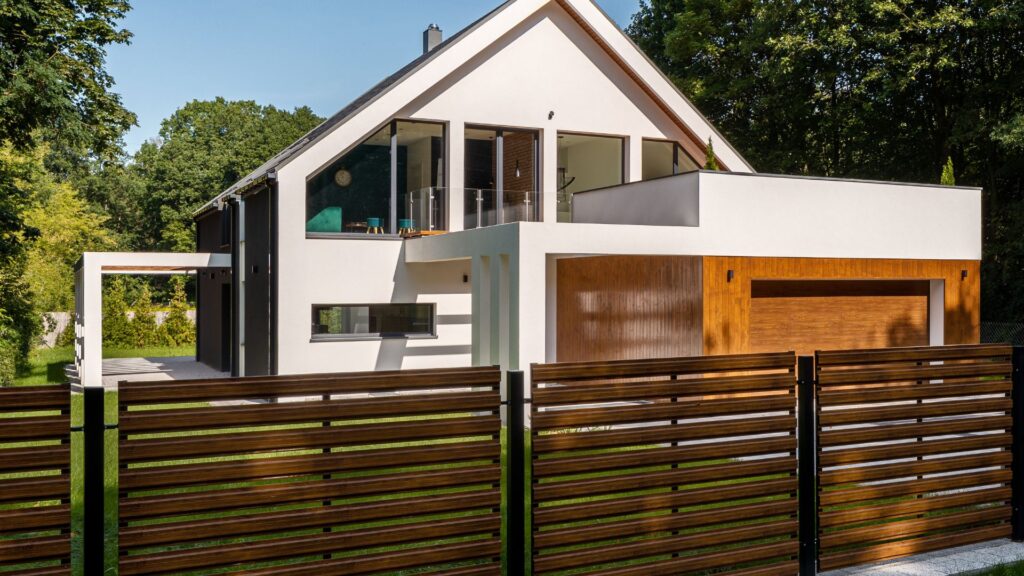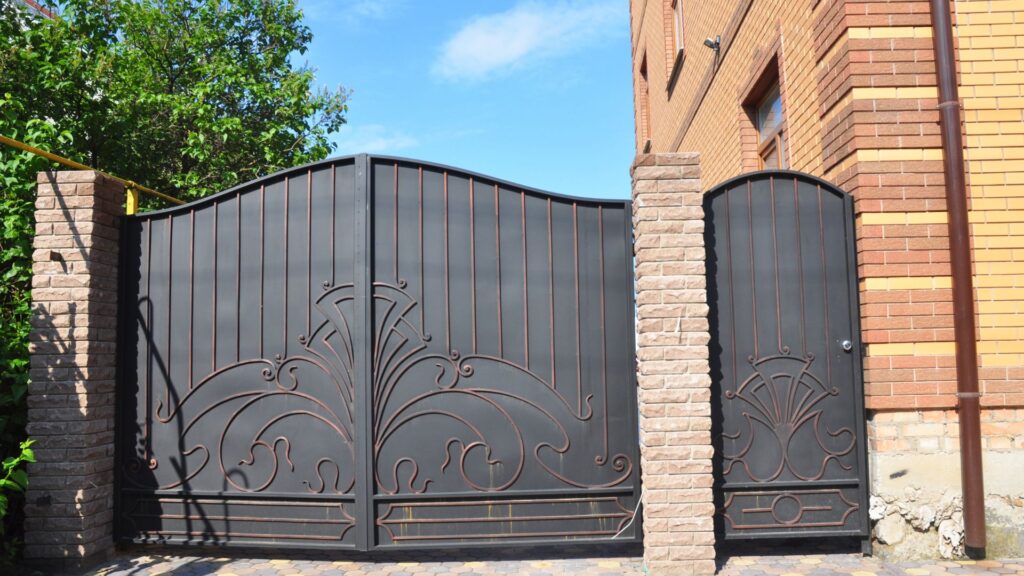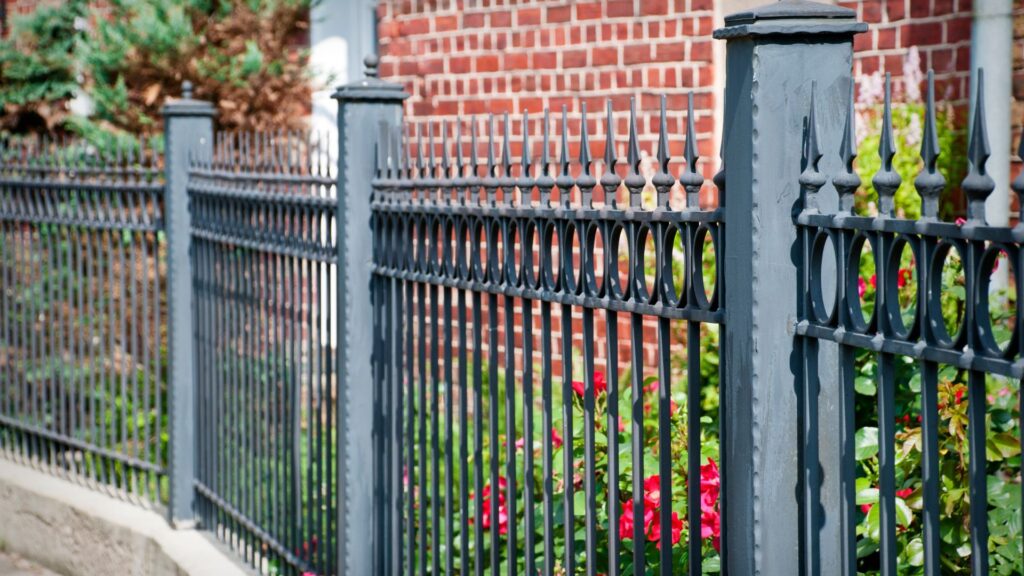Welcome to our comprehensive guide on understanding why fence posts rot at ground level and what you can do to prevent it. If you’ve ever noticed your fence starting to lean or weaken at the base, you’re not alone—this is a common issue that many homeowners face. The ground level is where wood posts are most vulnerable, constantly exposed to moisture, oxygen, and other elements that create the perfect environment for rot. In this post, we’ll dive deep into the causes behind this frustrating problem, explain the science of wood decay, and provide practical tips to help you protect your fence from rotting. Whether you’re looking to fix an existing problem or prevent future damage, we’ve got you covered with all the information you need to keep your fence standing strong for years to come.
Fence posts rot at ground level due to constant exposure to moisture, soil, and air, creating the perfect conditions for wood decay. The combination of trapped moisture, fungal growth, and alternating wet and dry cycles weakens the wood, causing it to deteriorate faster at the soil line. Proper installation, such as using treated wood, gravel for drainage, or sealing the posts, can help prevent rot and extend the life of your fence.
Table of Contents
What Causes Fence Posts To Rot At Ground Level?
Fence posts rotting at ground level is a common issue that can compromise the structural integrity of your fence. Understanding the factors that lead to rot can help you prevent it and extend the lifespan of your fence. In this section, we’ll explore the causes of fence post rot and how various conditions play a role in the deterioration process.
Introduction to Rotting Process
Wood rot occurs when moisture gets trapped inside the wood, creating an ideal environment for decay. The combination of water exposure, oxygen, and the presence of microorganisms like fungi leads to the breakdown of the wood fibers. Over time, this deterioration weakens the post, especially at ground level where moisture exposure is most prevalent. This process is typically slow but can accelerate if left unchecked, leading to costly repairs or replacements.
Key Factors That Contribute to Rot
Moisture Accumulation
Moisture is the leading cause of fence post rot. Rainwater, irrigation runoff, and groundwater tend to accumulate around the base of fence posts. When water pools near the post, it seeps into the wood, saturating it and making it more prone to decay. This is especially common in areas with poor drainage, where water cannot easily flow away from the base of the post. Constant moisture weakens the wood structure, and if not addressed, it will lead to rot.
Soil Contact
Soil contact plays a major role in the rotting process. The bottom section of a fence post is often buried in the ground, where it is in constant contact with damp soil. Soil retains moisture, which keeps the wood consistently wet. This continuous wetness, combined with poor airflow at the ground level, creates the perfect conditions for rot. As the post remains damp for extended periods, it begins to decay from the inside out.
Oxygen Exposure
While moisture is a key factor, oxygen exposure also contributes to wood decay. The soil line is where the post is exposed to both air and moisture simultaneously. This interaction allows fungi and other microorganisms to thrive. Wood decay fungi require both oxygen and water to grow, and the soil surface provides just the right conditions for them to take hold. As these fungi break down the wood fibers, the structural integrity of the post weakens over time.
Fungi and Microorganisms
Fungi and other microorganisms play a significant role in breaking down wood. When fence posts are exposed to moisture and oxygen, wood-decaying fungi begin to feed on the cellulose in the wood. Fungi like white rot and brown rot are common culprits, and their presence accelerates the decomposition process. In addition to fungi, bacteria present in the soil also contribute to the breakdown of wood fibers. Over time, this microbial activity causes significant deterioration of the fence post, particularly at ground level.
Weather Conditions
Fluctuating weather conditions also impact the health of fence posts. Heavy rainfalls followed by dry spells cause the wood to swell when wet and shrink as it dries. This constant expansion and contraction weaken the wood fibers, making the post more susceptible to cracking and rotting. Prolonged exposure to harsh weather conditions like storms or flooding can exacerbate the issue, accelerating the rot at the base of the post. In regions with extreme temperature changes, this cycle is even more pronounced, putting additional stress on the wood.
Fence posts rotting at ground level is primarily caused by moisture buildup, soil contact, and the presence of fungi and microorganisms. These factors, combined with fluctuating weather conditions and the interaction of moisture and oxygen, create an ideal environment for rot to take hold. By understanding these causes, you can take steps to protect your fence posts and prolong their life, such as ensuring proper drainage, using treated wood, or applying protective coatings. Taking preventive measures will help avoid the cost and hassle of replacing rotten fence posts.

Why Ground Level Is The Most Vulnerable Spot
When it comes to the longevity of your fence, ground level is where most of the damage begins. Let’s break down why this spot is particularly susceptible to rot, decay, and fungal growth, and how these issues can significantly weaken your fence over time.
Moisture Trap: The Perfect Storm for Decay
Ground level is essentially a moisture trap, creating the ideal conditions for wood rot. At this point, the fence post is often in contact with both moisture from the soil and oxygen from the air. This combination speeds up the rotting process because wood is most vulnerable when it’s subjected to moisture, and oxygen is essential for decay to occur. The ground level acts like a sponge, absorbing water and retaining moisture, which is why rot typically starts here or just above the soil line. This damp environment provides the perfect breeding ground for decay to take root and spread, often unnoticed until it’s too late.
Constant Exposure to Wet-Dry Cycles
Another reason ground level is a weak point is due to the constant exposure to wetting and drying cycles. Whether it’s from rain, irrigation, or morning dew, fence posts absorb moisture. When the sun comes out, the wood dries. Over time, this repeated cycle of soaking and drying can lead to the wood weakening, making it more vulnerable to cracking, splitting, and eventually rotting. Each wet-dry cycle puts stress on the structure of the wood, breaking down its natural fibers and causing it to lose strength. This constant exposure can make even treated wood deteriorate faster than expected, especially at the base of the post.
Fungal Growth: A Recipe for Decay
The area where the fence post meets the soil creates a perfect environment for fungal growth, which plays a key role in wood decomposition. Fungi thrive in conditions where there is moisture, limited airflow, and organic material to feed on—exactly what you find at the base of a fence post. These fungi are nature’s decomposers, breaking down the wood fibers and accelerating rot. Left unchecked, fungal growth can spread quickly, turning a solid fence post into a brittle, crumbling structure. Since this process happens mostly below ground or right at the soil line, it often goes unnoticed until the fence starts leaning or collapsing.
In summary, ground level is the most vulnerable spot for a fence post because it’s constantly exposed to moisture, wet-dry cycles, and fungal growth—all of which contribute to wood rot and structural failure. By understanding these factors, you can take steps to protect your fence posts, such as using rot-resistant materials, applying proper wood treatments, and ensuring good drainage around the base.

Types Of Rot: Identifying The Culprit
When it comes to wood decay, recognizing the type of rot is crucial for proper treatment and prevention. Wood rot is caused by various fungi that break down the structure of the wood, leading to potential structural failures if left untreated. There are three primary types of rot: brown rot, white rot, and soft rot, each with distinct characteristics and damage patterns. Understanding the signs and effects of these types of rot can help you identify the issue early and take the necessary steps to mitigate the damage.
Brown Rot
- Description: Brown rot, often referred to as “dry rot,” is one of the most common types of wood decay. This rot primarily attacks the cellulose in the wood, which is the part of the wood that gives it its strength and rigidity. When cellulose is destroyed, the wood loses its structural integrity, becoming weak and brittle. The name “brown rot” comes from the dark brown color that the wood takes on as it deteriorates.
- Signs: A key indicator of brown rot is wood that is dry, cracked, and crumbly. When you touch or press on the affected wood, it may easily break apart or disintegrate into powder. This type of rot causes wood to shrink and crack into roughly cube-shaped sections, a phenomenon known as “cubical cracking.” Brown rot can spread rapidly, making early detection critical to prevent extensive damage.
White Rot
- Description: White rot is distinct from brown rot in that it breaks down both cellulose and lignin, the latter of which gives wood its color and hardness. As white rot consumes both these components, the affected wood takes on a lighter, almost bleached appearance. It also becomes softer and more spongy, losing its rigidity. White rot tends to thrive in more humid environments, where moisture levels are consistently high.
- Signs: Unlike brown rot, which leaves wood brittle, white rot results in wood that feels soft, fibrous, and damp to the touch. The wood may appear white or pale in color, which gives this rot its name. In extreme cases, the surface of the wood may feel spongy, and large pieces can be pulled apart with little effort. White rot typically spreads more slowly than brown rot but can be just as destructive over time if not addressed.
Soft Rot
- Description: Soft rot develops in persistently wet environments, such as in soil or areas with consistent water exposure. While this type of rot is slower to cause damage compared to brown and white rot, it can still weaken the wood significantly over time. Soft rot is caused by a different group of fungi that can break down cellulose in more extreme conditions, where brown and white rot fungi might not survive.
- Signs: One of the challenges of identifying soft rot is that it tends to progress slowly and may not be obvious until significant damage has occurred. Early on, soft rot is often difficult to detect because it doesn’t immediately affect the surface of the wood. However, as the rot progresses, the wood may show signs of softening and weakening. Over time, the wood may become spongy or show visible cracks, especially in areas that remain wet for long periods.
Understanding the differences between brown rot, white rot, and soft rot is essential for preserving the structural integrity of any wooden structure. Each type of rot has its unique set of signs, from the dry, crumbly wood of brown rot to the soft, damp texture of white rot, and the slow, gradual weakening caused by soft rot. By recognizing these early warning signs, you can take quick action to prevent further decay and protect your wood from irreparable damage. Regular inspections and proper maintenance in high-moisture environments can help in identifying rot early and addressing it before it becomes a serious issue.
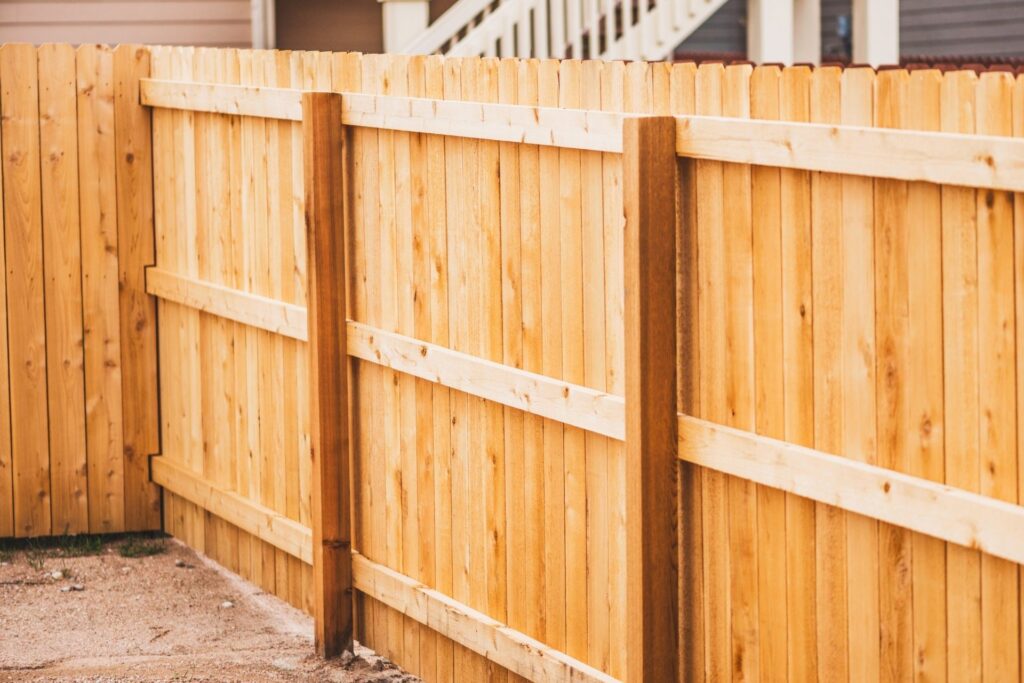
How To Prevent Fence Post Rot
Fence posts are essential for maintaining a sturdy and long-lasting fence, but they’re also prone to rot when exposed to moisture and soil. To ensure your fence posts remain strong for years, it’s important to follow certain preventive measures. In this section, we’ll explore practical steps for preventing fence post rot, from selecting the right wood to implementing proper installation and maintenance techniques.
1. Choosing the Right Wood for Fence Posts
The type of wood you choose plays a crucial role in determining how well your posts resist rot. Here’s what you need to consider:
Pressure-Treated Wood vs. Untreated Wood
- Pressure-treated wood is chemically infused to resist rot and insect damage, making it the best choice for outdoor structures like fence posts. These treatments help the wood withstand exposure to moisture and soil, where rot usually starts. In contrast, untreated wood is more susceptible to rotting and breaking down over time. While untreated wood may seem cheaper upfront, it can lead to costly repairs in the long run.
Rot-Resistant Wood Types
- Some woods are naturally resistant to rot. Woods like cedar and redwood contain oils and tannins that act as natural preservatives. These wood types are excellent choices for fence posts because they offer durability and can naturally resist fungal decay. Cedar and redwood may cost more initially, but they are worth the investment due to their longevity.
2. Proper Installation Techniques to Prevent Rot
Proper installation is key to keeping moisture away from the base of the fence post, where rot is most likely to occur. Here are some techniques to ensure a well-installed, long-lasting fence:
Gravel Base for Improved Drainage
- Instead of placing the fence post directly into the soil, it’s advisable to set it on a bed of gravel. Gravel improves drainage by allowing water to flow away from the post, which reduces the chances of moisture buildup that causes rot. Ensure that the gravel base is deep enough to support the post while promoting efficient water drainage.
Concrete Footing with Drainage Gap
- Using concrete to anchor your fence posts provides added stability. However, it’s essential to leave a gap at the bottom of the post when pouring the concrete. This small gap allows water to escape rather than collect around the base of the post, which can otherwise lead to rot. Proper drainage is critical to extending the life of wooden fence posts.
Raised Posts to Minimize Soil Contact
- Elevating the fence post above ground level using brackets or post anchors is another effective method to reduce soil contact. This technique keeps the wood away from damp soil, where rot is most likely to begin. By keeping the base of the post dry and elevated, you significantly reduce the risk of rot from prolonged moisture exposure.
3. Sealing the Wood for Protection
Applying a waterproof sealant or wood preservative is a straightforward and effective way to protect your fence posts from moisture and rot:
Applying Waterproof Sealants or Preservatives
- Regularly sealing your fence posts with a high-quality waterproofing product helps to prevent water from penetrating the wood. Look for sealants that are designed for outdoor use and specifically protect against rot, mildew, and UV damage. Applying a sealant every few years ensures your posts stay protected from the elements and extend their lifespan.
4. Regular Maintenance and Inspection
Even with the best materials and installation techniques, regular maintenance is necessary to prevent fence post rot.
Inspecting Posts for Early Signs of Rot
- Make it a habit to inspect your fence posts periodically, especially after heavy rains or in damp seasons. Look for signs of decay, such as discoloration, softness, or mold growth. Catching rot early allows you to treat the wood or replace the post before the rot spreads and weakens the structure.
Touching Up Sealant or Preservative
- Over time, the protective sealant or preservative will wear off due to weather conditions. Every few years, touch up or reapply these products to ensure your posts remain fully protected. Consistent maintenance is key to extending the life of your fence posts and keeping them rot-free.
Preventing fence post rot is all about choosing the right wood, installing it correctly, and performing regular maintenance. Opt for pressure-treated wood or naturally rot-resistant types like cedar or redwood, and make sure to install your posts on a gravel base or with concrete footing that allows for drainage. Elevating your posts slightly above the ground and applying a waterproof sealant will further protect them from moisture. Finally, inspect your fence posts regularly and touch up any sealant as needed to prevent long-term damage. By following these steps, you can ensure your fence remains strong, stable, and rot-free for years to come.

Fixing Fence Posts Affected By Rot
Rot is one of the most common issues homeowners face when it comes to fence maintenance. Over time, weather exposure, moisture, and ground contact can cause wooden fence posts to deteriorate. To maintain your fence’s longevity and keep it looking its best, it’s crucial to address rot as soon as you notice it. In this guide, we’ll walk you through how to spot early signs of rot, when to repair versus replace a post, and the steps for full post replacement if necessary.
Spot the Early Signs of Rot
Early detection of rot can save you a lot of hassle and expenses. Fence posts, being constantly exposed to the elements, can start to show signs of wear that should not be ignored. Here’s what to look for:
- Loose or Wobbly Posts: If you notice a fence post moving more than it should when you apply pressure, it could indicate that the wood near the base is rotting.
- Discolored Wood: A shift in the color of the wood, especially near the base where the post meets the ground, is another red flag. Dark patches, greenish growth, or an overall dull appearance often signal rot.
- Soft Spots: Press your hand against the wood. If it feels soft or sponge-like, it’s a sign that the structure is weakening due to rot.
Addressing these early signs can help prevent more extensive damage to the entire fence structure.
Repairing vs. Replacing a Rotting Fence Post
Once you’ve identified rot, the next decision is whether to repair the post or replace it entirely. The extent of the damage will guide your choice:
- When to Repair: If the rot is limited to a small portion of the post, especially near the base, repairs might be a good option. Quick fixes include using metal post menders or adding concrete footings around the post to stabilize it. Metal post menders are brackets that clamp onto the base of the post and provide additional support, while concrete footings create a stronger foundation.
- When to Replace: If a significant portion of the post is affected by rot, replacement is the more effective and long-lasting solution. Continuing to repair a severely rotted post will only offer temporary fixes, and the post will eventually need to be replaced.
Full Post Replacement: A Step-by-Step Guide
If you’ve decided that replacing the post is the best course of action, here’s how to do it:
1. Remove the Old Post
- Begin by digging around the base of the post to expose its foundation. Most fence posts are set in concrete, so you’ll need to break up or remove the concrete as well.
- Using a shovel or a post puller, carefully extract the post from the ground. If the post is severely rotted, it might break off, so be prepared to remove any remnants from the hole.
2. Prepare the Hole
- Clear out any debris from the hole and ensure it’s deep enough for the new post, typically about one-third of the post’s height. A depth of at least two feet is recommended to ensure the post is securely set.
- Consider adding a gravel base before placing the new post. This helps with drainage and reduces the chances of future rot.
3. Install the New Post
- Place the new fence post in the hole, ensuring it is perfectly vertical using a level.
- Add concrete to the hole, filling it up to a few inches below ground level. Make sure the concrete fully surrounds the post for maximum stability.
- Allow the concrete to set according to the manufacturer’s instructions before attaching the fence panels or rails to the new post.
4. Post-Rot Prevention Tips
- To minimize the risk of future rot, treat the base of the post with wood preservative before installation. This will provide added protection from moisture and decay.
- Avoid direct soil-to-wood contact by ensuring that the post is set in concrete or using a gravel base for better drainage.
- Regularly inspect your fence and apply wood sealant or preservative to maintain its durability against the elements.
By following these steps, you can effectively replace a fully rotted post and safeguard your fence against future problems.
Maintaining the integrity of your fence starts with addressing problems like rot before they spread. Whether you choose to repair or replace a damaged post depends on the extent of the rot, but both approaches can extend the life of your fence. Regular inspections, proper installation techniques, and preventative maintenance are key to ensuring your fence stays sturdy and attractive for years to come. By staying proactive with fence care, you’ll save time and money while keeping your outdoor space secure and visually appealing.

Common Mistakes That Lead To Faster Post Rot
Planting Posts Too Deep
One of the most frequent mistakes people make is planting posts too deep in the ground. While it might seem logical to bury them deeper for added stability, this can actually accelerate the rotting process. When posts are set too deep, they can trap moisture around the base, creating the perfect conditions for rot. Moisture buildup occurs because the soil around the deeper parts of the post doesn’t dry out as quickly. Over time, this prolonged exposure to moisture weakens the wood, leading to faster decay. Ensuring that posts are set at an appropriate depth, where they can be supported without being submerged in constantly damp soil, is key to preventing early rot.
Improper Drainage
Another common issue is failing to account for proper drainage around the base of the post. When water collects at the base, it has nowhere to go, creating a moist environment that wood simply can’t handle for long periods. Without a proper drainage plan, water will continuously seep into the post, eventually leading to rot. Installing gravel at the bottom of the post hole can help improve water flow and prevent pooling. Additionally, sloping the ground around the post can divert rainwater away, reducing the chances of moisture buildup. Ensuring proper drainage is a simple but crucial step to extending the life of your posts.
Using Untreated Wood
Choosing untreated wood for outdoor posts is a risky move, especially in areas with frequent rainfall or high humidity. Untreated wood is highly susceptible to moisture, and when it’s regularly exposed to rain or groundwater, rot can set in quickly. Pressure-treated wood, on the other hand, is chemically treated to resist rot and pests, making it far more durable for outdoor use. When posts are made from untreated wood, they lack this protective barrier and begin to break down as soon as they absorb moisture. Always opt for treated wood in environments prone to wet conditions to ensure your posts stand the test of time.
Concrete Without Drainage
A frequent mistake is encasing the base of a post entirely in concrete without any drainage solution. While concrete provides excellent stability, it can also trap water, especially if the bottom of the post hole is sealed or doesn’t allow for any runoff. Over time, water can collect in the concrete pocket around the post and be absorbed into the wood, speeding up the rot process. To avoid this, it’s important to either leave the bottom of the post hole open for drainage or add gravel beneath the concrete. This will allow any accumulated water to drain away, keeping the wood drier and less prone to rotting.
By avoiding these common mistakes—planting posts too deep, ignoring drainage, using untreated wood, and improperly using concrete—you can significantly extend the life of your posts and prevent premature rotting.

Environmental Factors That Affect Rot
When it comes to wood deterioration, several environmental factors come into play. Understanding how climate, soil, and exposure affect the rate at which rot sets in is key to protecting your wood structures and ensuring their longevity. Let’s break down some of these critical factors.
Climate Considerations
One of the primary factors influencing wood rot is the climate. Different weather conditions can significantly affect how quickly wood decays.
- Humid Climates: Areas with high humidity provide the perfect environment for fungi and mold to thrive, which accelerates the decomposition process in wood. When moisture levels stay consistently high, wood fibers break down faster, leading to softening and eventual rot.
- Dry Climates: While dry climates may seem like a safe haven for wood, they present their own challenges. Extreme dryness can cause wood to crack and split, making it more vulnerable to water infiltration if moisture levels suddenly rise (e.g., after a rainstorm).
- Rainy Climates: Frequent rainfall introduces excess moisture, a critical factor for wood rot. In these environments, untreated or poorly treated wood will quickly absorb water, leading to swelling, weakening of the structure, and decay over time.
- Snowy Climates: Snow and ice also play a role. Melting snow that sits against wood structures for long periods can saturate the wood, encouraging fungal growth and rot. Additionally, the freeze-thaw cycles can cause wood to expand and contract, weakening it over time.
Soil Types and Drainage
The type of soil surrounding wood structures, such as fence posts, is another factor that influences the rate of rot.
- Clay Soils: Clay retains water for long periods, which can be detrimental to wood structures in contact with the ground. Prolonged exposure to moisture causes the wood to soften, making it a prime target for fungal growth and decay.
- Sandy Soils: In contrast, sandy soils drain water more efficiently, reducing the amount of moisture that stays in contact with the wood. This slower moisture retention rate can help prevent rot by allowing the wood to dry out more quickly after a rainfall.
However, regardless of the soil type, proper drainage and grading are essential. Water that collects and pools around wooden posts or structures will lead to accelerated rot, especially if the wood is not adequately treated. Grading the land so that water flows away from the wood and installing proper drainage systems can significantly reduce the chances of moisture accumulation, thus preventing rot.
Exposure to Sunlight
While moisture is the leading cause of wood rot, exposure to sunlight is another factor that can weaken wood over time. UV rays from the sun can cause wood to dry out, leading to surface cracking. Once these cracks form, moisture can seep in more easily, starting the cycle of decay. Additionally, prolonged exposure to sunlight can degrade any protective coatings, such as paint or stain, that are intended to shield the wood from moisture.
In conclusion, environmental factors such as climate, soil type, drainage, and sunlight exposure all play crucial roles in the rate at which wood deteriorates. By understanding how these factors affect wood rot and taking steps to mitigate them—such as ensuring proper drainage, choosing the right wood treatment, and protecting wood from excess UV exposure—you can extend the lifespan of your wood structures.

Additional Alternatives To Traditional Wooden Posts
When planning a fencing project, traditional wooden posts are often the go-to choice. However, there are several alternative materials available today that may better suit your specific needs. Each material offers its own unique set of advantages and disadvantages, so it’s worth considering all your options before making a decision.
Metal Fence Posts
Metal fence posts are gaining popularity due to their impressive durability and resistance to the elements. Unlike wooden posts, which are prone to rot and decay over time, metal posts are much more resilient to harsh weather conditions. They can withstand extreme temperatures, moisture, and pests, ensuring a long-lasting foundation for your fence.
How to Integrate Metal Posts with Wooden Panels
One appealing option is to combine metal posts with wooden panels for a hybrid fence design. This approach allows homeowners to enjoy the rustic beauty of wood while benefiting from the structural strength of metal. Metal posts provide excellent stability and reduce the need for frequent replacements, making them an ideal choice for homeowners looking to reduce long-term maintenance.
When installing a hybrid fence, it’s important to ensure that the metal posts are compatible with the wooden panels you choose. Specialized brackets or fasteners are often used to seamlessly connect the two materials, resulting in a fence that is not only sturdy but also visually appealing.
Vinyl or Composite Posts
Vinyl or composite fence posts offer a modern alternative to wood that requires minimal upkeep. These synthetic materials are highly resistant to moisture, which means they won’t rot, warp, or splinter over time. Additionally, they are immune to insect damage, a common problem with traditional wooden posts.
Pros and Cons of Vinyl or Composite Materials
One of the biggest advantages of vinyl or composite posts is their longevity. These materials are designed to withstand years of exposure to the elements without degrading, making them an attractive option for those seeking a low-maintenance fencing solution. Another benefit is their uniform appearance, as vinyl and composite posts are available in a variety of colors and styles, allowing you to achieve a clean, polished look.
On the downside, synthetic materials often lack the natural beauty and texture of wood, which can be a drawback for homeowners seeking a more organic aesthetic. Additionally, vinyl and composite posts can be more expensive upfront than traditional wood, though this initial cost may be offset by the reduced need for maintenance and replacements.
Aesthetic and Longevity Comparisons to Wood
While wood offers a timeless, classic appearance, it requires regular upkeep to maintain its look and durability. Vinyl and composite posts, by contrast, provide a more modern, sleek appearance that stays intact for many years without the need for painting, staining, or sealing. This longevity makes them a cost-effective option in the long run, especially for homeowners looking to avoid the hassle of routine maintenance.
Concrete Posts
For those in need of a heavy-duty fencing solution, concrete posts are an excellent option. Known for their extreme strength and longevity, concrete posts are often used in commercial and industrial settings, as well as for residential fences that require extra reinforcement.
Durability and Use in Heavy-Duty Fencing
Concrete posts are highly durable and can withstand significant pressure, making them ideal for supporting large or heavy fences, such as those used to enclose livestock or protect property from trespassers. Their resistance to weathering means they will not rot or corrode, even in harsh environmental conditions.
Because of their durability, concrete posts are often used in areas that experience high winds or heavy snowfall, where other types of posts might buckle or break under pressure.
Potential Drawbacks of Concrete Posts
Despite their strength, there are a few drawbacks to using concrete posts. For one, they are significantly heavier than wood, metal, or vinyl, which can make installation more labor-intensive and costly. Additionally, concrete posts tend to be more expensive than other options, both in terms of material costs and installation fees. Homeowners should also consider that concrete can be difficult to modify once installed, making adjustments to your fence design more challenging in the future.
In conclusion, while traditional wooden posts are still a popular choice for fencing, alternative materials like metal, vinyl, composite, and concrete posts offer unique benefits that may better suit your needs. By weighing the pros and cons of each material, you can make an informed decision that balances durability, aesthetics, and long-term maintenance.

FAQs: About Why Do Fence Posts Rot At Ground Level
Why do fence posts rot at ground level?
Fence posts rot at ground level due to constant exposure to moisture, soil, and air. This area is where the wood is most vulnerable because it’s in contact with damp soil, which promotes fungal growth and wood decay. Over time, the continuous wetting and drying cycles weaken the wood, causing it to rot faster than other parts of the post.
How can I prevent fence posts from rotting?
To prevent fence posts from rotting, use pressure-treated wood, ensure proper drainage by placing gravel at the base of the post, and apply wood preservatives or sealants. Additionally, avoid burying posts directly in the soil by using metal post anchors or installing concrete footings with drainage gaps.
Is concrete a good option for setting fence posts?
Concrete can be a good option for setting fence posts, but it’s important to leave a gap between the post and the concrete for proper drainage. Fully encasing the post in concrete can trap moisture, accelerating the rot process. Gravel or drainage holes should be included to allow water to escape.
Can I repair a fence post that has started to rot?
If the rot is minimal, you can repair a fence post by stabilizing it with metal post menders or by adding concrete around the base for support. However, if the rot has significantly weakened the post, it’s best to replace it entirely to ensure the stability and safety of your fence.
What types of wood are best for preventing rot in fence posts?
Cedar and redwood are naturally rot-resistant woods that are ideal for fence posts. Pressure-treated wood is another excellent option, as it is chemically treated to resist moisture and decay, making it highly durable in outdoor conditions.
How deep should fence posts be installed to prevent rot?
Fence posts should be installed at least 2-3 feet deep or one-third of the post’s length for stability. While deeper posts provide more stability, it’s important to include proper drainage systems, such as gravel at the bottom, to prevent moisture buildup that leads to rot.
How often should I apply wood sealant or preservative to my fence posts?
To protect your fence posts from rot, apply a wood sealant or preservative every 2-3 years, depending on the climate and exposure to moisture. Regular maintenance ensures the wood remains protected from water damage and fungal growth.
Can I use metal or composite posts to avoid rot completely?
Yes, using metal or composite posts can help you avoid the problem of rot altogether. Metal posts, especially galvanized steel, and composite materials are resistant to moisture and decay, making them durable options for long-lasting fences.
Why do posts rot faster in some climates than others?
Fence posts rot faster in humid or rainy climates because the higher moisture levels promote faster wood decay. In contrast, dry climates with less rainfall slow down the rotting process. However, both extreme wet and dry conditions can stress the wood, leading to cracking and weakening.
Can I install fence posts without using concrete?
Yes, you can install fence posts without concrete by using alternative methods such as gravel or crushed stone for drainage. Gravel-filled holes provide stability while allowing water to drain away from the post, reducing the likelihood of rot. Metal post anchors can also be used to keep wood posts elevated above ground level.
Conclusion
In conclusion, preventing fence post rot is crucial for maintaining the longevity and stability of your fence. The primary causes of post rot include moisture accumulation, improper installation, and the use of untreated wood. To effectively prevent this, it’s important to select durable, rot-resistant materials, ensure proper drainage during installation, and maintain the fence with regular treatments. Don’t wait for signs of damage—inspect your fence posts now and take proactive measures to avoid costly repairs. For further guidance, check out our DIY fence post repair guide or explore our recommended wood treatments designed to resist rot and extend your fence’s life.
About the Author:
Mike Veail is a recognized digital marketing expert with over 6 years of experience in helping tradespeople and small businesses thrive online. A former quantity surveyor, Mike combines deep industry knowledge with hands-on expertise in SEO and Google Ads. His marketing strategies are tailored to the specific needs of the trades sector, helping businesses increase visibility and generate more leads through proven, ethical methods.
Mike has successfully partnered with numerous companies, establishing a track record of delivering measurable results. His work has been featured across various platforms that showcase his expertise in lead generation and online marketing for the trades sector.
Learn more about Mike's experience and services at https://theleadguy.online or follow him on social media:

